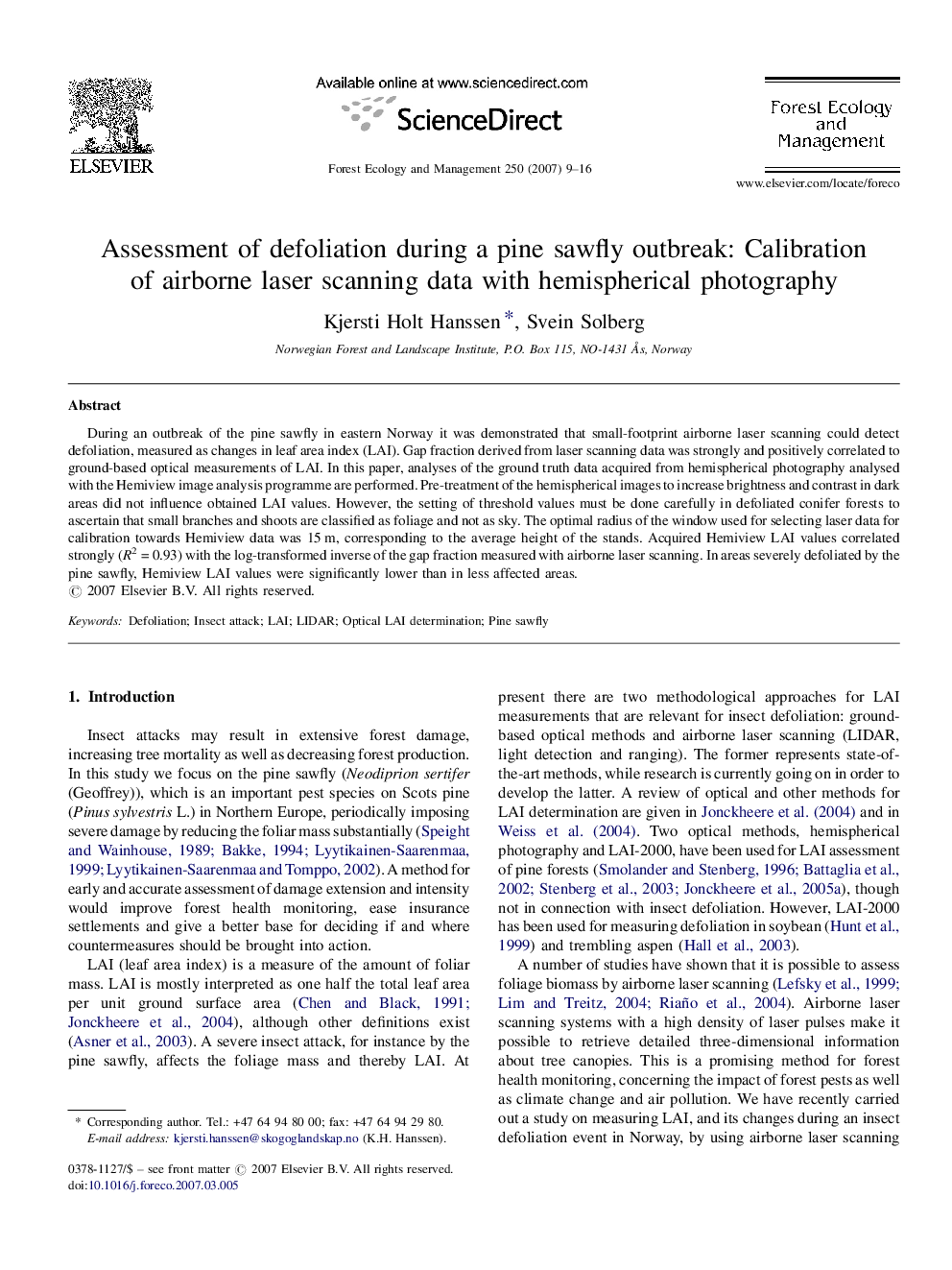| Article ID | Journal | Published Year | Pages | File Type |
|---|---|---|---|---|
| 89917 | Forest Ecology and Management | 2007 | 8 Pages |
During an outbreak of the pine sawfly in eastern Norway it was demonstrated that small-footprint airborne laser scanning could detect defoliation, measured as changes in leaf area index (LAI). Gap fraction derived from laser scanning data was strongly and positively correlated to ground-based optical measurements of LAI. In this paper, analyses of the ground truth data acquired from hemispherical photography analysed with the Hemiview image analysis programme are performed. Pre-treatment of the hemispherical images to increase brightness and contrast in dark areas did not influence obtained LAI values. However, the setting of threshold values must be done carefully in defoliated conifer forests to ascertain that small branches and shoots are classified as foliage and not as sky. The optimal radius of the window used for selecting laser data for calibration towards Hemiview data was 15 m, corresponding to the average height of the stands. Acquired Hemiview LAI values correlated strongly (R2 = 0.93) with the log-transformed inverse of the gap fraction measured with airborne laser scanning. In areas severely defoliated by the pine sawfly, Hemiview LAI values were significantly lower than in less affected areas.
